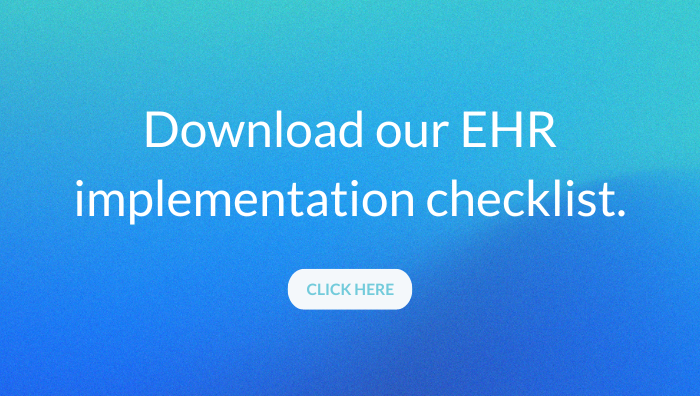As we mentioned in a previous post about data migration, in the fast-evolving world of healthcare IT, effective data migration is crucial. It ensures that patient records, clinical data, and administrative information transition seamlessly from legacy systems to advanced EHR platforms like Oracle Health EHR. Proper migration can improve patient care, streamline operations, and maintain compliance with regulatory standards. Unlike our previous guide which advised CIOs of the strategic approach to the process, this guide will walk IT managers through the essential steps for a successful migration.
Understanding Oracle Health EHR
Oracle Health EHR is a robust electronic health record platform designed to improve clinical outcomes and operational efficiency. Some of its key features include:
- Comprehensive Patient Records: Centralized access to patient history, treatments, and outcomes.
- Advanced Analytics: Tools for data-driven decision-making and predictive analytics.
- Interoperability: Seamless integration with other healthcare systems and devices.
- User-Friendly Interface: Simplified workflows for clinicians and administrative staff.
- Regulatory Compliance: Adherence to healthcare regulations and standards.
By understanding the core capabilities of Oracle Health EHR, IT managers can harness its full potential during the data migration process. Equipped with this foundational knowledge, the next step is to meticulously plan the migration journey to ensure minimal disruption and maximize efficiency. The following sections will outline the critical phases and best practices for a seamless data migration.
Preparing for Data Migration
Preparation is key to a smooth data migration. Here are steps to ensure a successful transition:
1 Data Cleaning
Before migration, it’s essential to clean your data. Remove duplicates, correct errors, and standardize formats. This ensures the data in your new system is accurate and reliable.
2 Data Mapping
Data mapping involves matching fields from your legacy system to those in Oracle Health EHR. This step is crucial for the consistency and usability of your data post-migration. Remember, focus on migrating only the data that will be useful in the future.
3 The Data Migration Process
Migrating data to Oracle Health EHR involves several critical steps. Here’s a detailed guide on executing the migration effectively:
Step 1: Plan and Execute Data Extraction from Legacy Systems
Begin by identifying the fields in Oracle Health EHR (Millennium) where your data will reside. It’s advisable to think in terms of Millennium fields rather than the legacy system’s fields. This approach minimizes the risk of data loss and ensures consistency.
Step 2: Validate Data Integrity and Perform Testing
Once the data is extracted, validate its integrity. Perform thorough testing to ensure the data is accurate and complete. This step helps identify any discrepancies or issues that need to be addressed before the actual migration.
Step 3: Focus on Necessary Data
Migrate only the data that will be used in the new system. While it may seem counterintuitive, simplifying the migration process by excluding unnecessary data increases the likelihood of success.
Step 4: Map Catalog Values
One of the biggest challenges in data migration is mapping catalog values from the legacy system to Millennium code values. For instance, mapping hospital services may not be straightforward. Engaging a Subject Matter Expert can facilitate this process. At EHR Enhancify, we specialize in mapping and can help identify requirements for data transformations.
Step 5: Implement Data Transformations
Oracle expects data transformations to be applied during data extraction from the legacy system. Implement these transformations in the SQL statement generating the extract. At EHR Enhancify, we offer a secure virtual server to receive initial data extracts, apply transformations, and perform pre-processing analysis. This ensures the migration scripts receive data in the required structure.
Step 6: Assist Oracle or Third-Party Consultants
Provide data extracts as requested by Oracle or third-party consultants. Helping them with specific requirements can streamline the migration process and reduce complications.
Step 7: Allow Time for Interface Build
The development of migration scripts and the Millennium interface build can take several months, depending on data complexity and developer experience. Be prepared to make adjustments to the CSV extract as the Millennium development progresses.
Step 8: Plan Migration Tests into the Domain Strategy
Ideally, when implementing Millennium and migrating data from your legacy system, you would want to plan at least two rounds of complete migration tests.
In this case, you can conduct the migration tests in the pre-Production domain that will become the future Production domain.
Consider performing the tests before each of the Integration Testing events. At a minimum, before the second migration test, an activity delete will be necessary to avoid overlapping data you would have already migrated in the first round. The migration tests and activity deletes should be planned into your Domain Strategy document.
Don’t forget that with every test, you are placing real patient data in a pre-production domain. This should be planned, and the appropriate authorization will be required.
Full migration tests may not always be possible in non-production domains (like CERT or MOCK), which typically have less disk space.
Post-Migration Checklist
After the migration, follow these steps to ensure data integrity and system functionality:
- Verify Data Accuracy: Check that all data has migrated correctly and matches the original records.
- Test System Functionality: Ensure that all system features are working as expected.
- Monitor Performance: Keep an eye on system performance and address any issues promptly.
- User Training: Provide training to staff to ensure they can use the new system effectively.
Conclusion
Effective data migration to Oracle Health EHR is a complex but manageable process. By following the steps outlined in this guide, IT managers can ensure a smooth transition, preserving data integrity and enhancing overall healthcare operations. Proper data migration not only improves patient care but also streamlines workflows and maintains regulatory compliance.
Ready to make your data migration seamless and efficient? Contact EHR Enhancify today to get expert assistance and ensure your migration to Oracle Health EHR is a success.




